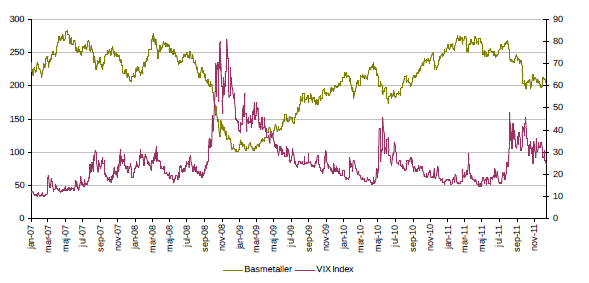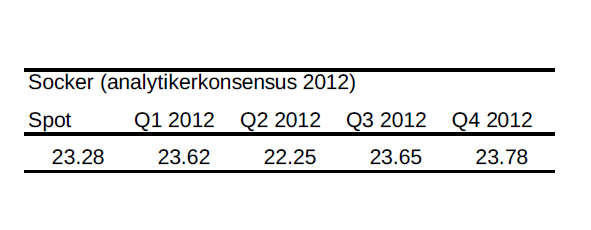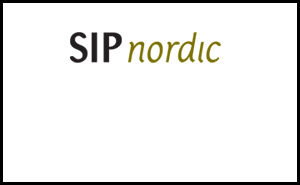Analys
SIP Nordic – Nytt år, nya möjligheter
 Samtidigt som det är dags att summera ett ganska ljummet råvaruår är det hög tid att rikta blickarna mot 2012 års spåkula. Kommer industrimetallpriserna hålla emot, fortsätter guldet sin lyckliga resa under 2012 och hur heta är egentligen jordbruksråvarorna? Oavsett vad har vi ett spännande år framför oss där mycket kommer att styras av oron för en Eurokris. Råvaror har mer och mer blivit en självklar del av portföljen och samtidigt som de finansiella marknaderna kämpar mot extrem turbulens har råvaror klivit fram som räddare i nöden. Aktiemarknaden kommer troligtvis att fortsätta att famla i mörkret, ständigt hemsökta av oron om en europeisk statsskuldskris såväl som rädsla av en återkommande global recession. Det som talar för att råvaror, generellt, kommer att gå motsatt håll är bland annat tillväxtmarknadernas fortsatta tillväxt, försvagning av dollarn samt en fortsatt obalans i tillgång och efterfrågan.
Samtidigt som det är dags att summera ett ganska ljummet råvaruår är det hög tid att rikta blickarna mot 2012 års spåkula. Kommer industrimetallpriserna hålla emot, fortsätter guldet sin lyckliga resa under 2012 och hur heta är egentligen jordbruksråvarorna? Oavsett vad har vi ett spännande år framför oss där mycket kommer att styras av oron för en Eurokris. Råvaror har mer och mer blivit en självklar del av portföljen och samtidigt som de finansiella marknaderna kämpar mot extrem turbulens har råvaror klivit fram som räddare i nöden. Aktiemarknaden kommer troligtvis att fortsätta att famla i mörkret, ständigt hemsökta av oron om en europeisk statsskuldskris såväl som rädsla av en återkommande global recession. Det som talar för att råvaror, generellt, kommer att gå motsatt håll är bland annat tillväxtmarknadernas fortsatta tillväxt, försvagning av dollarn samt en fortsatt obalans i tillgång och efterfrågan.
Råvaror i det långa loppet
Råvaror har haft en otrolig utveckling sedan starten av detta millennium och om historien upprepar sig har råvaror, trots det oroliga börsläget, många goda år framför sig. Råvaror och aktiemarknaden har sedan 1870 alternerat om vilken marknad som presterat bäst. Under 1980 och 90 talet florerade aktiemarknaden samtidigt som råvarupriserna låg på bottennivåer. Detta gjorde att investeringar i gruvor, oljereservoarer och jordbruk inte ansågs sexiga nog att investera i. Och det är just detta som gett upphov till den positiva trend råvaror är i nu. Pga. Av bristande investeringar har vi i nuläget en obalans i tillgång och efterfrågan vilket driver upp priserna i de flesta råvarorna.
Rädsla trycker ned basmetallerna
Nu ska man ju inte titta sig blind på historisk data men det finns en del intressanta iakttagelser att beakta. En intressant iakttagelse är den negativa korrelationen mellan VIX index, ofta kallad fear index, och basmetallernas prisutveckling. En hög volatilitet betyder allt som oftast en nedåtgående aktietrend vilket ger avtryck i basmetallernas utveckling då marknaden tror på en avsvalnande tillväxt. Nu har VIX Index börjat stabiliseras och är på väg ned till mer normala nivåer. Kommer detta att resultera i att basmetallerna återigen klättrar norrut? Ja, för vissa metaller så finns det ett flertalet punkter som talar för det.
Vad gäller då för 2012?
Det mest troliga är att råvaror kommer att använda 2012 för att hämta andan för att sedan spänna bågen ordentligt inför 2013 hjälpta av en mer stabil ekonomisk utsikt samt ett åter ökande tillgångsunderskott. Trots detta finns det många guldkorn under 2012 och kom ihåg, man behöver inte alltid tro på uppgång.
Råvaruåret 2012 ser ut att bli mycket svårtippat då en ökad korrelation med aktiemarknaden talar för stagnerade prisutvecklingar. Jag sticker dock ut hakan och tror på uppgång i guld och platina. En sista kommentar: Ur kaos kommer alltid möjligheter.
Alexander Frick
Råvaror – Update
Guld – Trygg hamn eller inte
- Guldets nedgång de senaste veckorna kan härledas till den generella panik som råder bland investerare. Investerare säljer av för att istället placera i likvida medel.
- Den stigande dollartrenden har också påverkat guldpriset negativt. Under 2012 kommer dollarkursen studeras noga för att se var guldet bär av.
- Guld har haft smått otroliga 11 plusår i rad. Nu när priset korrigerats nedåt talar mycket för att 2012 också blir ett bra år.
Silver
- Silver är en mer använd industrimetall än guld. Ändå har silver seglat upp som god tvåa i racet om den trygga hamnen.
- Överskottet av silver uppgår idag till 14%. Inför 2012 spås överskottet minska en aning till 9,8%.
- Trots ett högt pris på silver är det långt kvar till ATH på 100 dollar (1978)
- En fortsatt förstärkning av dollarn mot euron kommer troligtvis påverka negativt på silverpriset.
Platina
- Sydafrikanska producenter, som står för den största delen av platinaproduktion, kämpar med fackliga problem och elavbrott. Något som kommer inverka positivt på platinakursen.
- Fortsatt obalans i tillgång och efterfrågan talar för ett fortsatt högt pris.
- Nuvarande tillgängligt platina räcker endast till 16 månaders konsumtion. Tillgängligt platina har minskat med 30% sedan 2001.
Brent olja
- Oljelagerstatistiken pekar på mycket låga nivåer i USA. Någon som håller uppe oljepriset trots den globala oron.
- Oron i Iran och de andra OPEC länderna kompenserar det oroliga börsläget. Ett oljepris som konsoliderar under början av 2012 är inte osannolikt.
- Kan olja fortsätta hålla emot bra är det en av den mest intressanta placeringarna på marknaden. Om eller när den europeiska krisen får en lösning kommer oljepriset att påverkas positivt.
Koppar
- Strejker i stora gruvor i Peru och Indonesien fortsätter att begränsa utbudssidan. Det ska dock vara nära en lösning men produktion lär halta en aning.
- Koppar är mycket konjunkturskänsligt och följer ofta negativa aktietrender. Sedan början av året är koppar ned ca. 23%. Världens största kopparkonsument, Kina spås inte ha en lika hög tillväxt vilket kan påverka kopparpriset negativt.
- Trenden i kopparpriset är dock avtagande men analytikerkåren ser positivt på kopparn inför 2012.
Naturgas
- Naturgaspriserna fortsätter sin resa söderut, delvis pga. en högre medeltemperatur i USA. 51% av USAs hushåll använder naturgas för uppvärmning.
- Naturgas är en av de svåraste råvarorna att lagra. I priset på framtida leveranser ingår lagerkostnader, ränta och försäkring så trots att terminsmarknaden för naturgas ser ut att stå stilla, faller den fritt.
- Naturgas har tappat nästan 70% sedan finanskrisen men kan tappa ytterligare 50% för att matcha de låga nivåerna som rådde under 90-talet.
- Tekniskt handlas Naturgas i en negativ trend.
Majs
- Den globala majsproduktionen spås nå rekordnivåer under början av 2012 trots minskad produktion i USA.
- Det genomsnittliga priset spås vara 30 cents lägre än föregående räkenskapsår, enligt USDA.
- USDA spår en nedgång i majspriset, uppbackat av ökad produktion i såväl Kina som Europa och Kanada samt gynnsamma globala väderförhållande.
- Den tekniska trenden för majs är nedåtgående med en viktig stödnivå på 572 cents per bushel.
Vete
- Den globala produktionen av vete spås stiga med 5.3% under första halvåret 2012, samtidigt som efterfrågan endast kommer att öka 3.3%, med ett totalt överskott om 10 miljoner ton.
- Vete har tappat närmre 25% under de senaste året men fortfarande är priset på ca. 6 dollar tillräckligt attraktivt för att bönder ska fortsätta plantera. Ett ökande överskott är således att vänta.
- Ytterligare faktorer som talar för en fortsatt nedåtgående trend är rädslan för en global recession där oron för att världens största veteimportör, Kina, ska dra i handbromsen.
Socker
- Överskottet av socker har mer än halverats sedan maj.
- Dåliga väderförhållanden i Brasilien har fått analytiker att revidera sockerskörden med nästan 20%.
- Sockerproduktionen i Indien väntas fortfarande växa. Dock med blygsamma 8%, att jämföra med förra årets tillväxt på 25%.
Bomull
- Förra året rusade bomull med en nästan fördubblad kursuppgång. I år har läget varit annorlunda. Rekordskördar och svagare efterfrågan har tryckt ned bomullspriset rejält.
- Trots en kraftig nedgång ligger bomullspriset på historiskt höga nivåer och en halvering av bomullspriset är inte otänkbart.
- Det höga priset har återställt balansen i tillgång och efterfråga.
- Trots extrem torka i USA har goda skördar i Kina och Indien täckt upp detta bortfall.
- I dagsläget ligger genomsnittsinvesteraren i långa positioner men säljarna blir fler och fler.
[box]Denna uppdatering är producerat av SIP Nordic och publiceras i samarbete och med tillstånd på Råvarumarknaden.se[/box]
Ansvarsbegränsning
Detta produktblad utgör endast marknadsföring och har sammanställts av SIP Nordic Fondkommission AB.
Innehållet ger inte fullständig information avseende det finansiella instrumentet. Investerare uppmanas att del av prospekt och slutliga villkor, vilka finns tillgängliga på: www.rbsbank.se/markets, innan ett investeringsbeslut tas.
Förekommande exempel är simulerade och baseras på SIP Nordics egna beräkningar och antaganden, en person som använder andra data eller antaganden kan nå andra resultat. Administrativa avgifter och transaktionsavgifter påverkar den faktiska avkastningen.
Analys
A sharp weakening at the core of the oil market: The Dubai curve

Down to the lowest since early May. Brent crude has fallen sharply the latest four days. It closed at USD 64.11/b yesterday which is the lowest since early May. It is staging a 1.3% rebound this morning along with gains in both equities and industrial metals with an added touch of support from a softer USD on top.

What stands out the most to us this week is the collapse in the Dubai one to three months time-spread.
Dubai is medium sour crude. OPEC+ is in general medium sour crude production. Asian refineries are predominantly designed to process medium sour crude. So Dubai is the real measure of the balance between OPEC+ holding back or not versus Asian oil demand for consumption and stock building.
A sharp weakening of the front-end of the Dubai curve. The front-end of the Dubai crude curve has been holding out very solidly throughout this summer while the front-end of the Brent and WTI curves have been steadily softening. But the strength in the Dubai curve in our view was carrying the crude oil market in general. A source of strength in the crude oil market. The core of the strength.
The now finally sharp decline of the front-end of the Dubai crude curve is thus a strong shift. Weakness in the Dubai crude marker is weakness in the core of the oil market. The core which has helped to hold the oil market elevated.
Facts supports the weakening. Add in facts of Iraq lifting production from Kurdistan through Turkey. Saudi Arabia lifting production to 10 mb/d in September (normal production level) and lifting exports as well as domestic demand for oil for power for air con is fading along with summer heat. Add also in counter seasonal rise in US crude and product stocks last week. US oil stocks usually decline by 1.3 mb/week this time of year. Last week they instead rose 6.4 mb/week (+7.2 mb if including SPR). Total US commercial oil stocks are now only 2.1 mb below the 2015-19 seasonal average. US oil stocks normally decline from now to Christmas. If they instead continue to rise, then it will be strongly counter seasonal rise and will create a very strong bearish pressure on oil prices.
Will OPEC+ lift its voluntary quotas by zero, 137 kb/d, 500 kb/d or 1.5 mb/d? On Sunday of course OPEC+ will decide on how much to unwind of the remaining 1.5 mb/d of voluntary quotas for November. Will it be 137 kb/d yet again as for October? Will it be 500 kb/d as was talked about earlier this week? Or will it be a full unwind in one go of 1.5 mb/d? We think most likely now it will be at least 500 kb/d and possibly a full unwind. We discussed this in a not earlier this week: ”500 kb/d of voluntary quotas in October. But a full unwind of 1.5 mb/d”
The strength in the front-end of the Dubai curve held out through summer while Brent and WTI curve structures weakened steadily. That core strength helped to keep flat crude oil prices elevated close to the 70-line. Now also the Dubai curve has given in.
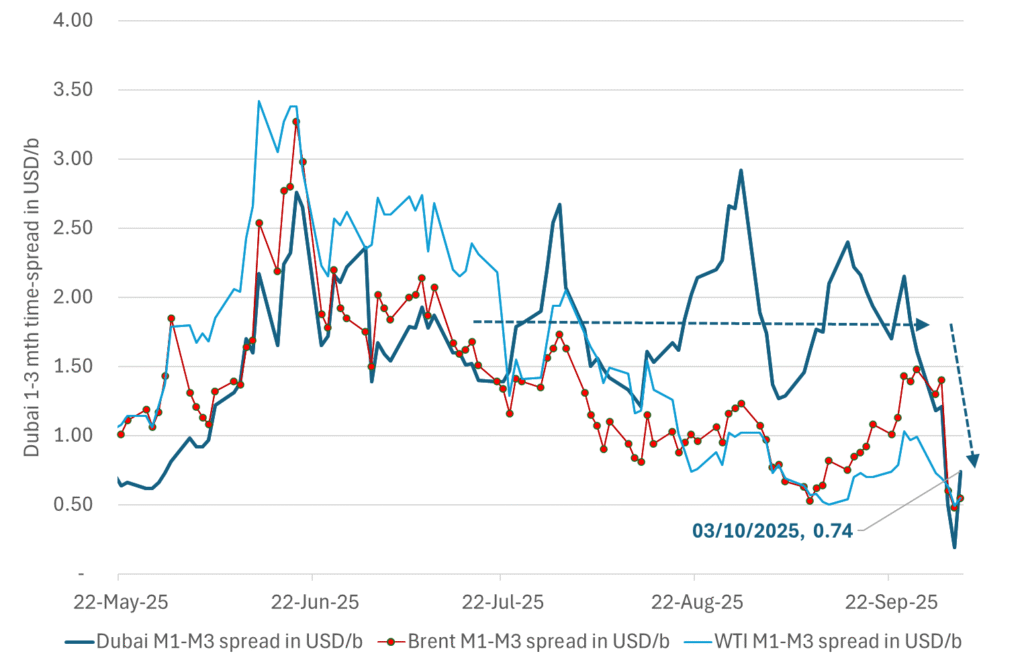
Brent crude oil forward curves
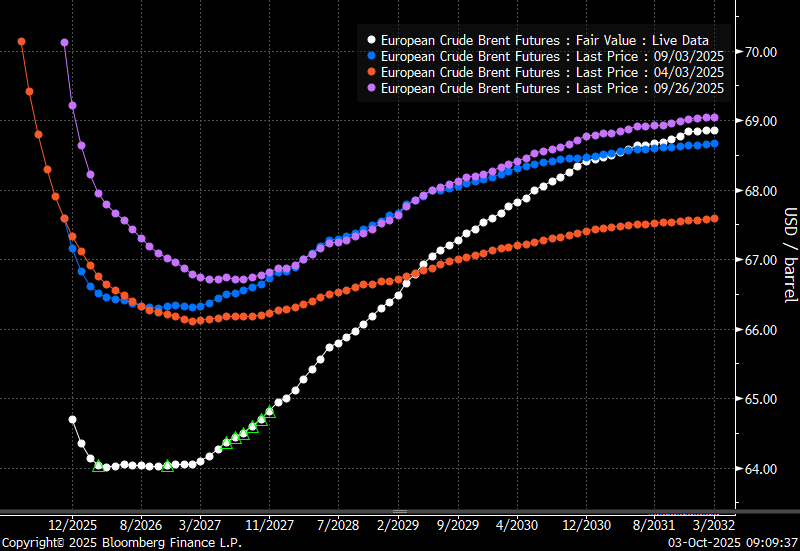
Total US commercial stocks now close to normal. Counter seasonal rise last week. Rest of year?
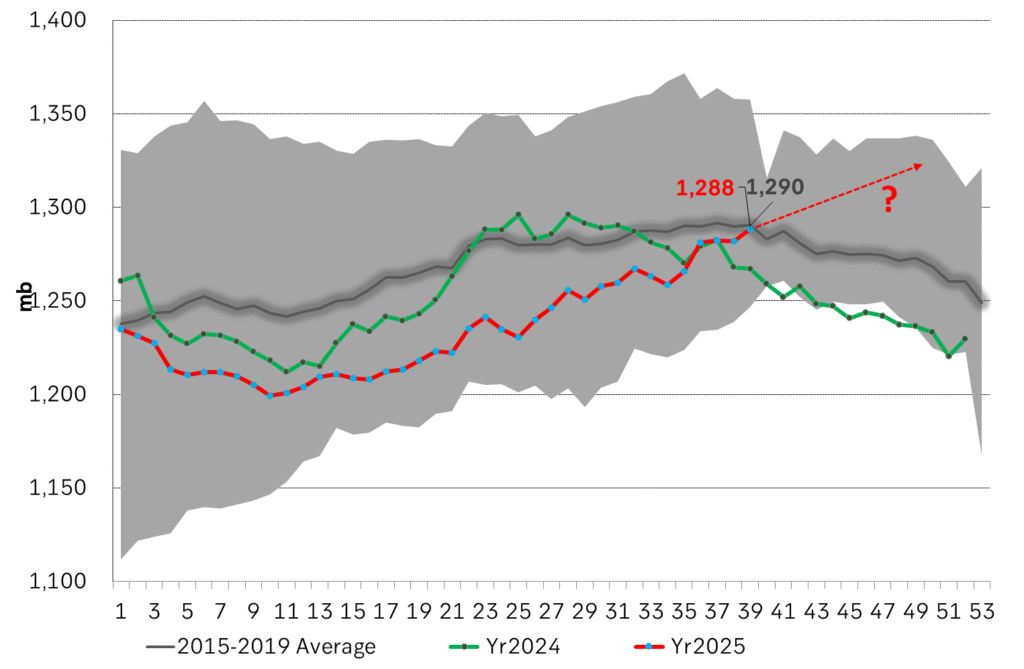
Total US crude and product stocks on a steady trend higher.
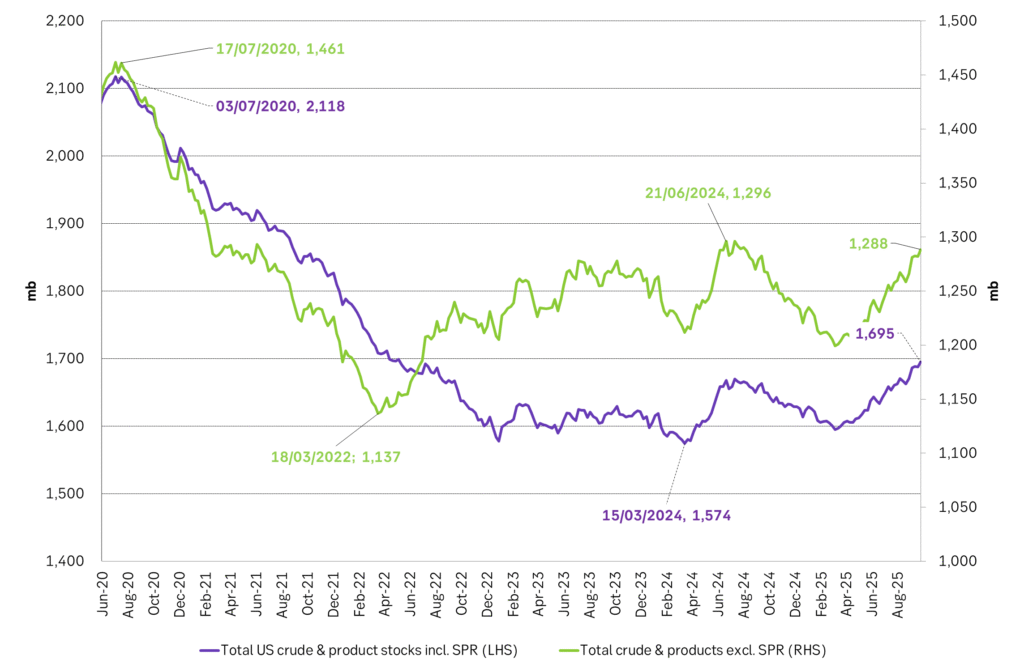
Analys
OPEC+ will likely unwind 500 kb/d of voluntary quotas in October. But a full unwind of 1.5 mb/d in one go could be in the cards

Down to mid-60ies as Iraq lifts production while Saudi may be tired of voluntary cut frugality. The Brent December contract dropped 1.6% yesterday to USD 66.03/b. This morning it is down another 0.3% to USD 65.8/b. The drop in the price came on the back of the combined news that Iraq has resumed 190 kb/d of production in Kurdistan with exports through Turkey while OPEC+ delegates send signals that the group will unwind the remaining 1.65 mb/d (less the 137 kb/d in October) of voluntary cuts at a pace of 500 kb/d per month pace.

Signals of accelerated unwind and Iraqi increase may be connected. Russia, Kazakhstan and Iraq were main offenders versus the voluntary quotas they had agreed to follow. Russia had a production ’debt’ (cumulative overproduction versus quota) of close to 90 mb in March this year while Kazakhstan had a ’debt’ of about 60 mb and the same for Iraq. This apparently made Saudi Arabia angry this spring. Why should Saudi Arabia hold back if the other voluntary cutters were just freeriding? Thus the sudden rapid unwinding of voluntary cuts. That is at least one angle of explanations for the accelerated unwinding.
If the offenders with production debts then refrained from lifting production as the voluntary cuts were rapidly unwinded, then they could ’pay back’ their ’debts’ as they would under-produce versus the new and steadily higher quotas.
Forget about Kazakhstan. Its production was just too far above the quotas with no hope that the country would hold back production due to cross-ownership of oil assets by international oil companies. But Russia and Iraq should be able to do it.
Iraqi cumulative overproduction versus quotas could reach 85-90 mb in October. Iraq has however steadily continued to overproduce by 3-5 mb per month. In July its new and gradually higher quota came close to equal with a cumulative overproduction of only 0.6 mb that month. In August again however its production had an overshoot of 100 kb/d or 3.1 mb for the month. Its cumulative production debt had then risen to close to 80 mb. We don’t know for September yet. But looking at October we now know that its production will likely average close to 4.5 mb/d due to the revival of 190 kb/d of production in Kurdistan. Its quota however will only be 4.24 mb/d. Its overproduction in October will thus likely be around 250 kb/d above its quota with its production debt rising another 7-8 mb to a total of close to 90 mb.
Again, why should Saudi Arabia be frugal while Iraq is freeriding. Better to get rid of the voluntary quotas as quickly as possible and then start all over with clean sheets.
Unwinding the remaining 1.513 mb/d in one go in October? If OPEC+ unwinds the remaining 1.513 mb/d of voluntary cuts in one big go in October, then Iraq’s quota will be around 4.4 mb/d for October versus its likely production of close to 4.5 mb/d for the coming month..
OPEC+ should thus unwind the remaining 1.513 mb/d (1.65 – 0.137 mb/d) in one go for October in order for the quota of Iraq to be able to keep track with Iraq’s actual production increase.
October 5 will show how it plays out. But a quota unwind of at least 500 kb/d for Oct seems likely. An overall increase of at least 500 kb/d in the voluntary quota for October looks likely. But it could be the whole 1.513 mb/d in one go. If the increase in the quota is ’only’ 500 kb/d then Iraqi cumulative production will still rise by 5.7 mb to a total of 85 mb in October.
Iraqi production debt versus quotas will likely rise by 5.7 mb in October if OPEC+ only lifts the overall quota by 500 kb/d in October. Here assuming historical production debt did not rise in September. That Iraq lifts its production by 190 kb/d in October to 4.47 mb/d (August level + 190 kb/d) and that OPEC+ unwinds 500 kb/d of the remining quotas in October when they decide on this on 5 October.

Analys
Modest draws, flat demand, and diesel back in focus

U.S. commercial crude inventories posted a marginal draw last week, falling by 0.6 million barrels to 414.8 million barrels. Inventories remain 4% below the five-year seasonal average, but the draw is far smaller than last week’s massive 9.3-million-barrel decline. Higher crude imports (+803,000 bl d WoW) and steady refinery runs (93% utilization) helped keep the crude balance relatively neutral.

Yet another drawdown indicates commercial crude inventories continue to trend below the 2015–2022 seasonal norm (~440 million barrels), though at 414.8 million barrels, levels are now almost exactly in line with both the 2023 and 2024 trajectory, suggesting stable YoY conditions (see page 3 attached).
Gasoline inventories dropped by 1.1 million barrels and are now 2% below the five-year average. The decline was broad-based, with both finished gasoline and blending components falling, indicating lower output and resilient end-user demand as we enter the shoulder season post-summer (see page 6 attached).
On the diesel side, distillate inventories declined by 1.7 million barrels, snapping a two-week streak of strong builds. At 125 million barrels, diesel inventories are once again 8% below the five-year average and trending near the low end of the historical range.
In total, commercial petroleum inventories (excl. SPR) slipped by 0.5 million barrels on the week to ish 1,281.5 million barrels. While essentially flat, this ends a two-week streak of meaningful builds, reflecting a return to a slightly tighter situation.
On the demand side, the DOE’s ‘products supplied’ metric (see page 6 attached), a proxy for implied consumption, softened slightly. Total demand for crude oil over the past four weeks averaged 20.5 million barrels per day, up just 0.9% YoY.
Summing up: This week’s report shows a re-tightening in diesel supply and modest draws across the board, while demand growth is beginning to flatten. Inventories remain structurally low, but the tone is less bullish than in recent weeks.

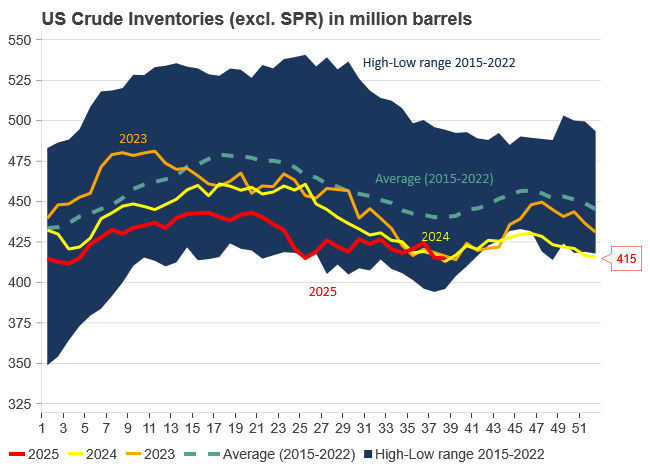
-

 Nyheter3 veckor sedan
Nyheter3 veckor sedanMahvie Minerals i en guldtrend
-

 Nyheter4 veckor sedan
Nyheter4 veckor sedanEurobattery Minerals satsar på kritiska metaller för Europas självförsörjning
-

 Nyheter4 veckor sedan
Nyheter4 veckor sedanGuldpriset kan närma sig 5000 USD om centralbankens oberoende skadas
-
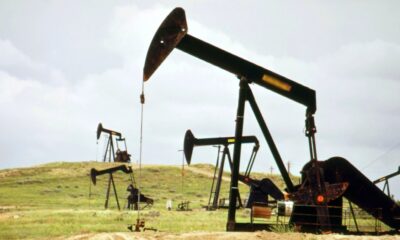
 Nyheter4 veckor sedan
Nyheter4 veckor sedanOPEC signalerar att de inte bryr sig om oljepriset faller kommande månader
-

 Analys3 veckor sedan
Analys3 veckor sedanVolatile but going nowhere. Brent crude circles USD 66 as market weighs surplus vs risk
-
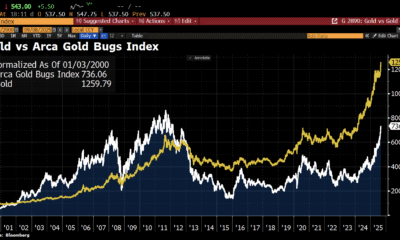
 Nyheter3 veckor sedan
Nyheter3 veckor sedanAktier i guldbolag laggar priset på guld
-

 Nyheter3 veckor sedan
Nyheter3 veckor sedanKinas elproduktion slog nytt rekord i augusti, vilket även kolkraft gjorde
-

 Nyheter2 veckor sedan
Nyheter2 veckor sedanTyskland har så höga elpriser att företag inte har råd att använda elektricitet


